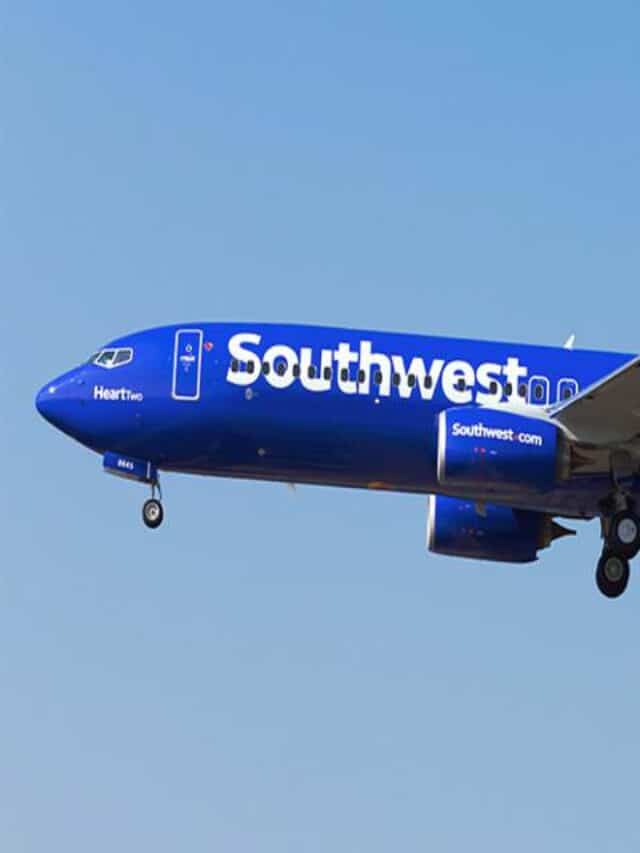Aerospace
Southwest Airlines is on a New Reservation System!

You could say the plane landed safely for Southwest Airlines Tuesday.
After a three-year project to overhaul a reservation system the airline used for 30 years, Southwest and its project partner, Amadeus IT Group, took their new product live on Tuesday across the airline’s operational system.
“Our people have trained well for this day and were prepared,” a spokesman said, providing an update on how the day was going at midafternoon.
The project to create Southwest and Amadeus’ new Amadeus Altea Passenger Service System involved a team of more than 1,500 people from both Southwest and Amadeus.
It impacts airline employees across the system, including the 600 who work in a reservations center Southwest has in Oklahoma City.
The new software updates the airline’s reservation system for its customers. It also is designed to use that reservation data to optimize the airline’s flight schedule by improving connection times, and to better manage its inventory of aircraft and employees between any given origin and destination.
Additionally, it gives the airline the ability to automate rebookings when there are flight disruptions caused by weather and other challenges.
Southwest said it expects its new reservation system and its improved functionality will generate about $500 million in incremental annual earnings by 2020 (before interest and taxes) by improving its operational capabilities.
The biggest test for the airline, of course, was to pull off the transition without much in the way of its customers noticing.
The project to create Southwest and Amadeus’ new Amadeus Altea Passenger Service System involved a team of more than 1,500 people from both Southwest and Amadeus.
It impacts airline employees across the system, including the 600 who work in a reservations center Southwest has in Oklahoma City.
The new software updates the airline’s reservation system for its customers. It also is designed to use that reservation data to optimize the airline’s flight schedule by improving connection times, and to better manage its inventory of aircraft and employees between any given origin and destination.
Additionally, it gives the airline the ability to automate rebookings when there are flight disruptions caused by weather and other challenges.
Southwest said it expects its new reservation system and its improved functionality will generate about $500 million in incremental annual earnings by 2020 (before interest and taxes) by improving its operational capabilities.
The biggest test for the airline, of course, was to pull off the transition without much in the way of its customers noticing.
Officials said Southwest began using the new system for bookings on international flights in 2014. In December 2016, it began booking reservations using the new software for all of its flights booked for Tuesday or later.

Aerospace
Boeing Transfers Rocket Stage to NASA, Paving Way for Human Moon Mission

Boeing has achieved a significant milestone by providing NASA with the second core stage of the Space Launch System (SLS) rocket.
This crucial component, crafted at NASA’s Michoud Assembly Facility (MAF), is set to propel the Artemis II crew into lunar orbit, marking humanity’s return to deep space after a 50-year hiatus.
The monumental Boeing-built rocket stage, the largest element of the Artemis II mission, will embark on a journey aboard the Pegasus barge, traveling 900 miles to NASA’s Kennedy Space Center.
Comparison of two legendary aircraft B777x vs B747 aircraft:Click here
Upon arrival, it will be meticulously integrated with other essential Artemis II components, including the upper stage, solid rocket boosters, and NASA’s Orion spacecraft within the iconic Vehicle Assembly Building. This intricate integration process is a vital step toward the eagerly anticipated Artemis II launch, slated for 2025.
“Boeing-built products helped land humankind on the moon in 1969, and we’re proud to continue that legacy through the Artemis generation,” remarked Dave Dutcher, vice president and program manager for Boeing’s SLS program. “Together, with NASA and our industry partners and suppliers, we are building the world’s most capable rocket and paving the way to deep space through America’s rocket factory in New Orleans.”
NASA, Lockheed Martin Reveal X-59 Quiet Supersonic Aircraft:Click here
The delivery of Core Stage 2 marks a significant achievement in the evolution of the SLS rocket. Towering over 200 feet and powered by four RS-25 engines, this core stage, coupled with two solid-fueled booster rockets, will generate a staggering 8.8 million pounds of thrust. This immense power is crucial to launching Artemis II and future missions into the vast expanse of space.
The SLS rocket stands unparalleled in its capability to transport both crew and substantial cargo to the moon and beyond in a single launch. Its extraordinary capacity will facilitate the delivery of human-rated spacecraft, habitats, and scientific missions to destinations including the moon and Mars, ushering in a new era of space exploration.
-

 Travel1 week ago
Travel1 week agoAir India to Expand US Operations with Three New Routes After a Decade
-

 Travel2 weeks ago
Travel2 weeks agoWhy We Should Avoid These Stamps in a Passport
-

 Airlines1 month ago
Airlines1 month agoInvestigations Reveal Fake Chinese Titanium in Boeing and Airbus Jets
-

 Tech4 weeks ago
Tech4 weeks agoChina’s CATL Plans 1,800-Mile Electric Plane Launch by 2027
-

 Airport3 days ago
Airport3 days agoTop 10 Largest Airports in the World by Size
-

 Aerospace4 weeks ago
Aerospace4 weeks agoChina’s Fighter Jets Turn Wings into Autonomous Drones
-

 Airlines4 days ago
Airlines4 days agoAir India Rolls Out A350s for Delhi-New York JFK and Newark Routes
-

 Defence3 weeks ago
Defence3 weeks agoBoeing Enhances Chinook with New Engines and Block II Upgrades at $96 Million







